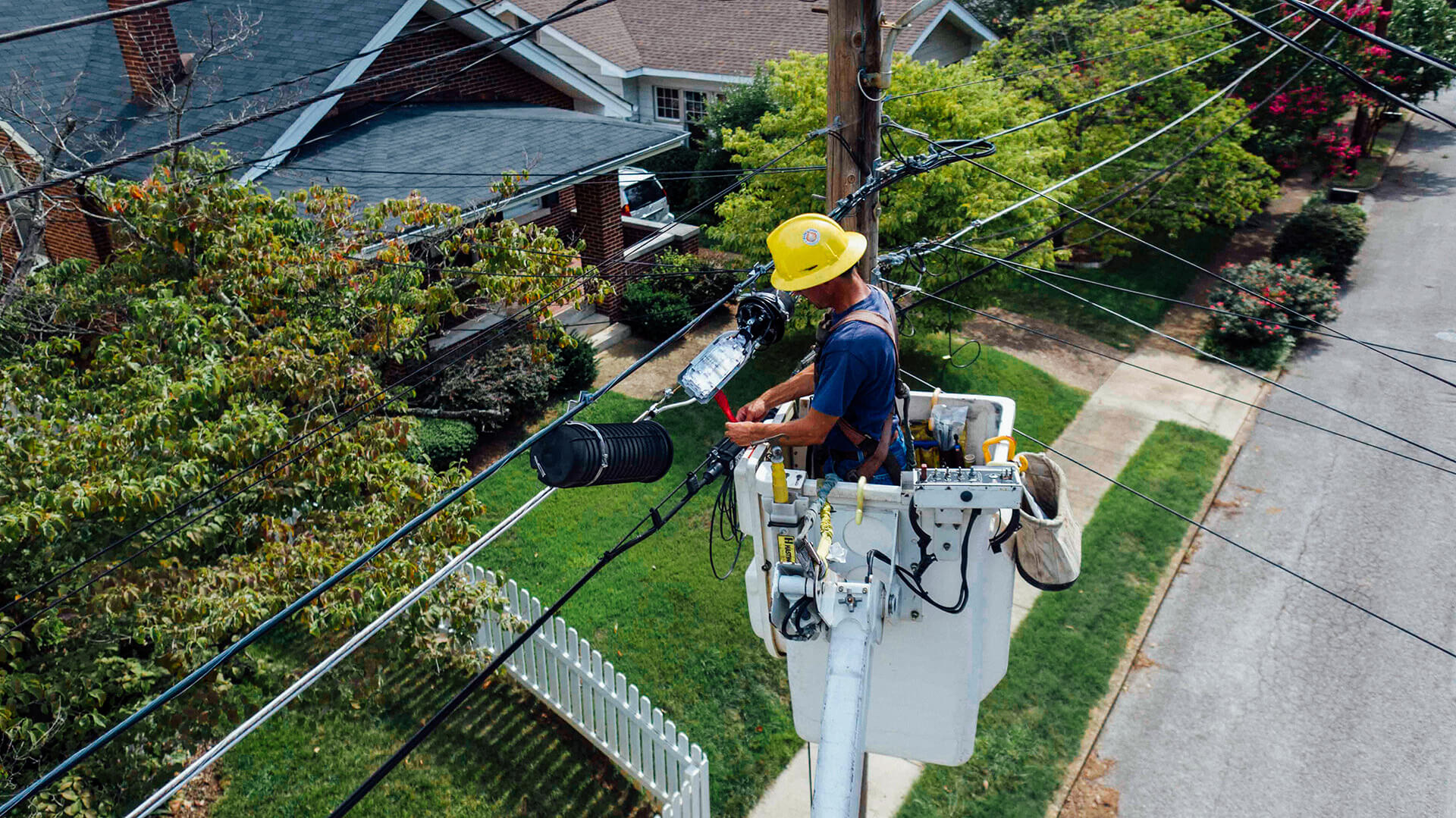Many construction workers complain that they can’t hear as well as they used to, and statistics back them up. Electricians and other construction workers are exposed to noises loud enough to cause permanent noise-induced hearing loss.
In the US, construction workers are five times more likely to file workers’ compensation claims for hearing loss than are workers in all occupations combined.
Table of Contents
What is noise?
Noise is unwanted sound. Noise levels are measured on a decibel scale (dBA), which matches the ear’s sensitivity to sound.
A whisper is about 30 dBA, normal conversation is 60–70 dBA, and power tools are often between 90–110 dBA. If two people at arm’s length must raise their voices to be heard, the noise level is above 85 dBA.
Continue Reading: Noise Hazards at the Workplace >
Why is noise an important workplace hazard?
Noise is one of the most common occupational health hazards. In heavy industrial and manufacturing environments, as well as other situations such as farms, cafeterias, or bars.
Permanent hearing loss is the main health concern. Annoyance, stress, and interference with speech communication are the main concerns in a noisy environment.
To prevent adverse outcomes of noise exposure, noise levels should be reduced to acceptable levels. The best method of noise reduction is to use engineering modifications to the noise source itself, or to the workplace environment.
Where technology cannot adequately control the problem, personal hearing protection (such as earmuffs or plugs) can be used.
Personal protection, however, should be considered as an interim measure while other means of reducing workplace noise are being explored and implemented.
Continue Reading: About Hearing Loss >

Source: Unsplash
What happens if you are exposed to too much noise?
Noise exposures that are loud enough and last long enough can damage nerves in the inner ear, causing permanent and irreversible hearing loss.
This damage can result from repeated exposure to levels above 85 dBA (such as years of working around construction noise without hearing protection), or from as little as one exposure above 140 dBA.
Workers who have suffered hearing loss often become socially isolated because they can’t communicate easily with others. They also may not be able to hear warning signals, which can lead to accidents and injuries.
Continue Reading: Labyrinthitis Symptoms, Causes, Types, Diagnosis, Treatment >
However, we found many situations in which workers rarely or never use hearing protection. This gap in hearing protector use puts electricians at risk for hearing loss.
Average noise exposures and hearing protector use for Electricians
The table shows information from our full-shift measurements on electricians. The average level measured was 79.9 dBA.
However, one in five measurements was above 85 dBA, the 8-hour allowable limit.

Above this level, hearing protectors are required. Very few measurements were above 90 dBA. We found that electricians used hearing protectors only 18% of the time that their exposure levels were above 85 dBA.
Over one-third of all measurements also included exposure above 115 dBA. Even though hearing protectors are always required above 115 dBA, they were used only about 15% of the time.
One possible reason that hearing protectors were used less at 115 dBA than at 85 dBA is that very high exposure levels are usually shorter in duration than lower levels, so workers may not have enough time or warning to put on hearing protectors.
Continue Reading: Hearing Protection At Work >
Safe noise levels
Workers with a full-shift (8 hours) average exposure above 85 dBA are required to wear hearing protection devices (either earplugs or earmuffs).
They also must be included in a hearing conservation program in which they receive annual hearing tests and training on noise exposure and hearing loss. Workers must always use hearing protection when levels exceed 115 dBA.
How electricians can prevent hearing loss
Electricians have the potential for high exposure to noise. The preferred way to prevent hearing damage is to reduce noise at its source.
However, earplugs and earmuffs will always be necessary for some construction activities. One in five full-shift average measurements on electricians was above the standard for 8-hour noise exposure.
In this table, You’ll find the percent of work shifts above the 8-hour standard (in order of increasing percentages), percent of time hearing protection was used above 85 dBA, and average full-shift noise level (by trade).

Unfortunately, electricians used hearing protection only about 18% of the time they were exposed above 85 dBA, and 15% of the time they were exposed above 115 dBA.
Electricians often got more noise exposure from activities going on around them than they did from their own work, and need to consider nearby activities as well as their own when choosing hearing protection.
Recommendations for hearing loss prevention
Educational programs can help make electricians aware that almost all activities on the job site–including breaks and eating lunch–have potentially hazardous noise levels.
All electricians in the construction industry should be enrolled in a hearing conservation program, and efforts should be made to reduce the noise levels of construction activities and to increase the use of hearing protection.
All hearing protectors are labeled with a Noise Reduction Rating (NRR), which is a laboratory estimate of how much noise the hearing protector will block. Typically, the NRR level is about two times higher than the protection most workers experience in actual use.
Almost all full-shift noise exposure measurements on electricians were below 90 dBA. To adequately protect against these average noise levels, we recommend hearing protectors with an NRR of 12 dB. For most activities, an NRR higher than this will provide too much
Hearing Loss Damage Compensation for Electricians
The Workers Compensation Program was established in 1911 to encourage employers to make the workplace safer by requiring safety programs and the use of safety devices.
Since 1911, there have been over 2.5 million workers’ compensation claims filed. Hearing loss workers compensation claims now rank #3 in the number of occupational disease claims filed.
Hearing loss workers’ compensation benefits are largely undiscovered benefits covering hearing health care, which is often uninsured. Many health insurance policies and programs like Medicare do not cover hearing aid purchases but workers’ compensation can.
It also pays for the disability of hearing loss just as it does for the loss of eyesight or other injuries.
Aging populations, advances in technology, and greater sensitivity to hearing loss are bringing more attention to financing hearing health care. For the most part, those who qualify for hearing loss workers’ compensation benefits are retired hearing-impaired workers who live on fixed incomes.
Always feel free to ask Johnson Law Offices about the process, the law, or an individual case. The legal, medical, and audio-metric questions that come into play in a hearing loss workers compensation claim can be complicated.
The claims require attention to detail mixed with an ability to work well with hearing-impaired retirees and their families, especially spouses, and their hearing health care professionals.
Continue Reading: All About Workers’ Compensation >
Sources
Contact Us
If you, or anyone you know, worked in noise and suffers from hearing loss, please do not hesitate to contact us.
Contact Us


